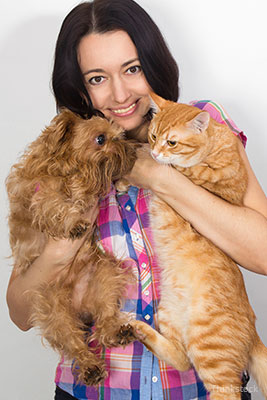[ad_1]
Not too method again, I’ve seen a rash of regarding Web headlines in reference to a new analysis take a look at. The headlines could lead on you to consider that cats love you lower than canines, nonetheless, these headlines are deceptive and don’t give an applicable overview of what the take a look at actually discovered.
 The ‘Protected Attachment’ take a look at
The ‘Protected Attachment’ take a look at
Consistent with the PLOS One net web page, the place the take a look at by Alice Potter and Daniel Mills is revealed, it concerned twenty guardian-cat pairs. The cats had been positioned in two rooms with two chairs (one for the guardian and one for a stranger) together with some cat toys and coated dwelling residence home windows. A video digicam taped the interplay between every cat, the guardian and the stranger all by way of a wide range of behaviors (guardian leaving and returning, stranger leaving and returning, and many others.) The researchers used a look at generally referred to as the “Ainsworth Unusual State of affairs” to gauge the habits of the cats within the case of how fairly a bit attachment the cats appeared to have with their guardians.
The ‘Protected Attachment’ take a look at outcomes
Researchers discovered that cats contained in the look at did vocalize extra when their guardian left, in contrast with the stranger leaving, however they “didn’t see any extra proof to recommend that the bond between a cat and guardian is one amongst protected attachment.”
The researchers really discovered that “many elements of the habits of cats…should not per the traits of attachment.” Nonetheless, furthermore they well-known that the look at didn’t look into whether or not or not or not there’s additionally variations in attachment between cats which are indoor solely and indoor/out of doors, and so they additionally furthermore well-known that the look at they used could not have been an atmosphere pleasant instrument to hunt out out cats’ attachments to guardians. Notably, they talked about that “…we don’t want to level out that cats don’t type some type of affectionate social relationship or bond with their householders…solely that the reference to the first caregiver shouldn’t be usually characterised by a need for that particular person particular person based completely on them offering security and safety for the cat.”
What does all of this actually recommend?
What this means is that cats don’t current the equal form of attachment to their guardians that canines do within the case of seeing the guardian as a present of security and current extra behaviors that we might time interval “unbiased.” This doesn’t recommend in the slightest degree that cats don’t profit from their relationship with their guardians – they merely search human companionship for various causes and in plenty of methods from canines.
For instance, the take a look at discovered that when utilizing the Ainsworth look at with canines, standing by the door, the place the guardian had exited, was a key measure for figuring out attachment and even separation nervousness. They didn’t see this habits among the many many many cats contained in the take a look at, however that will not be on account of cats don’t miss you – the researchers uncover it will very properly be on account of the fact that “cats don’t present misery on this suggests.”
Inside a cat’s social group, you don’t see the equal sort of sturdy social bonds that you’re going to uncover in groupings of canines. This can be on account of cats being extra solitary hunters and certainly not needing to bond as rigorously with social teams to have the power to outlive1.
In distinction to canines, who’ve been working and dwelling with people far longer, cats don’t look to individuals for his or her on each day foundation wants. Nonetheless, they do clearly type social bonds with their householders and present “affectionate” habits, together with a need for his or her guardian(s) over non-household people. Briefly, don’t let catchy headlines make you doubt your cat’s love.
Sources
- Crowell-Davis SL. 2007. Cat habits: Social group, communication and progress. In: Rochlitz I, editor. The Welfare of Cats. Dordrecht: Springer, pp. 1-21.)
[ad_2]
